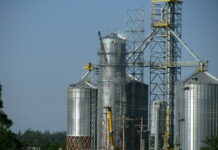Photo credit: DiasporaEngager (www.DiasporaEngager.com).
Introduction
An 8-mg intranasal naloxone formulation, a higher-concentration product than had previously been available, was approved by the Food and Drug Administration (FDA) in 2021 for emergency treatment of known or suspected opioid overdose (1); however, no real-world data on use of the 8-mg product are available. The approval of the higher-concentration formulation was based on the 505(b)(2) approval pathway under the Federal Food, Drug, and Cosmetic Act, relying on data from the original FDA approval of naloxone (1) and supported by reports from both the FDA Advisory Committee (2) and the National Institutes of Health (3), which both suggested that higher-dose initial opioid reversal agents were needed to effectively respond to overdoses from synthetic opioids, including fentanyl. For example, one retrospective study of community members noted that the majority administered ≥2 doses in responding to suspected overdoses (4). However, no real-world quantitative data suggest that 4-mg intranasal naloxone is ineffective at reversing such overdoses.*
In 2014, New York began a law enforcement naloxone initiative, which includes developing and delivering training, and supplying naloxone to law enforcement, providing implementation guidance, and having a system for collecting data on naloxone administrations† (5). The New York State Police (NYSP), a statewide law enforcement organization, reports the highest number of annual law enforcement naloxone administrations among New York law enforcement agencies, with approximately 360 reports per year (New York State Department of Health [NYSDOH], unpublished data, 2022). In New York, 4-mg intranasal naloxone is currently the product most commonly used by community responders, including law enforcement. For each person to whom naloxone is administered, law enforcement agencies submit a naloxone administration report to NYSDOH; reports include the following information: 1) date and time of administration, 2) age and perceived gender of the aided person, 3) county and zip code where the overdose occurred, 4) naloxone formulation used, 5) number of naloxone doses administered, 6) response to naloxone, 7) postnaloxone signs and symptoms, 8) emergency medical services disposition, and 9) survival.
Harm reduction advocates and medical professionals have noted potential harms of higher-dose naloxone, including severe withdrawal signs and symptoms, which can result in refusal of medical care, rapid reuse of opioids, reluctance to use naloxone if witnessing an overdose, and respiratory complications, including pulmonary edema and consequences of aspiration of vomitus (6,7). To evaluate this potential risk, in 2022, NYSDOH partnered with NYSP to field test 8-mg intranasal naloxone use by some NYSP troops. The aims of the study were to conduct real-world comparisons of survival, the average number of doses administered, presence of postnaloxone signs and symptoms, and hospital transport refusal among persons receiving the 8-mg or the 4-mg intranasal naloxone products.
Source of original article: Centers for Disease Control and Prevention (CDC) / Morbidity and Mortality Weekly Report (MMWR) (tools.cdc.gov).
The content of this article does not necessarily reflect the views or opinion of Global Diaspora News (www.GlobalDiasporaNews.com).
To submit your press release: (https://www.GlobalDiasporaNews.com/pr).
To advertise on Global Diaspora News: (www.GlobalDiasporaNews.com/ads).
Sign up to Global Diaspora News newsletter (https://www.GlobalDiasporaNews.com/newsletter/) to start receiving updates and opportunities directly in your email inbox for free.

































